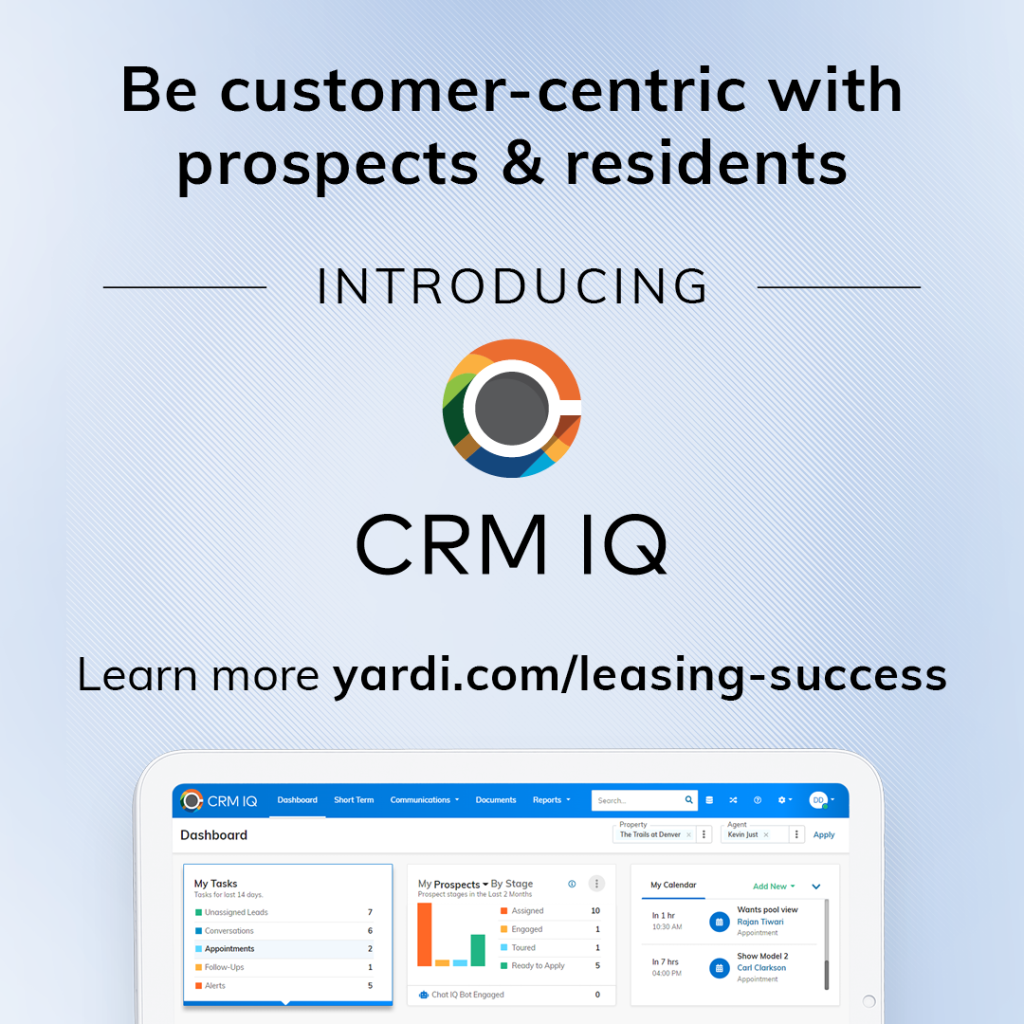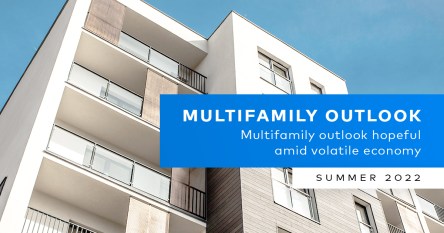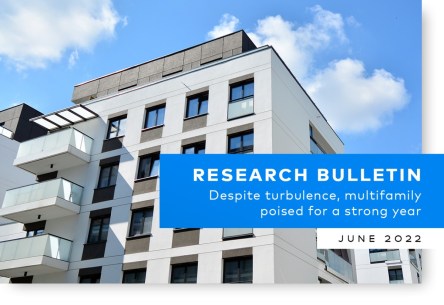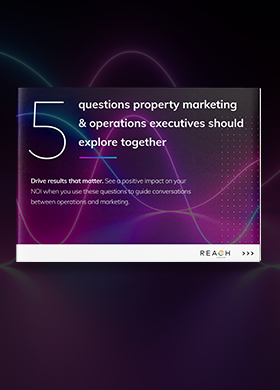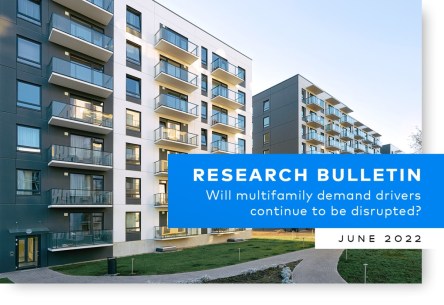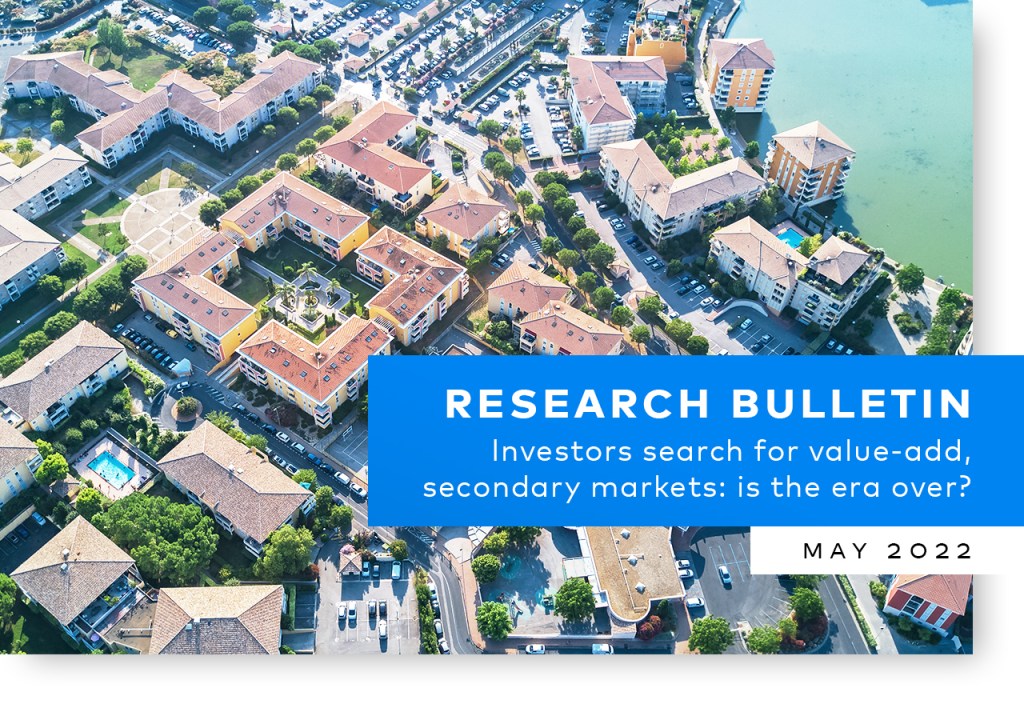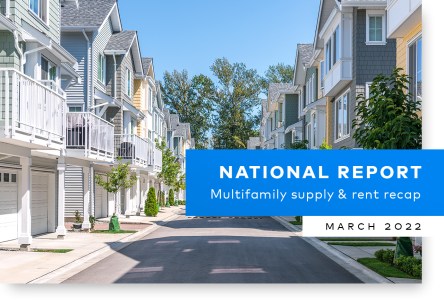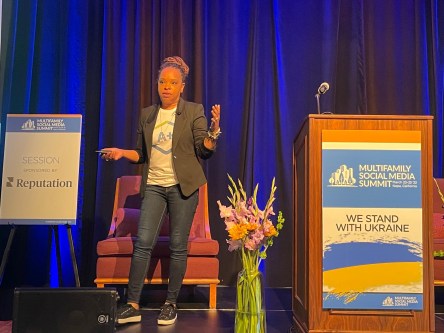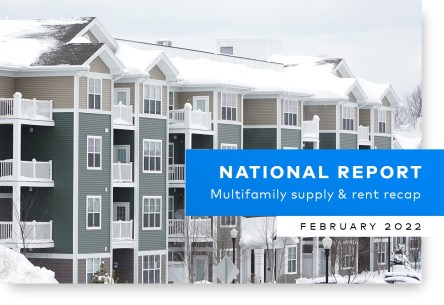Pet-friendly apartments are becoming the norm, especially among younger renters. Millennials are now the biggest market for pet ownership. Property managers and owners need to stand out and make their complexes more unique and attractive with pet amenities. But have you ever wondered what your pet might want in their new apartment? The secret life of pets may open new ideas for property owners across the country. Let’s look at this from the pet’s perspective and what they want to see when they tag along on a tour of your apartment complex. The perfect perks for pups Dogs are excitable, sociable, friendly, and have lots of energy. Since dogs are so social and energetic, an on-site dog park is essential to earn five stars from Fido. Something that would be large enough for them to spread their paws and has lots of green grass. Yappy Hour at the complex dog park would be an attractive resident event that you can hold monthly. During Yappy Hour you can provide some refreshments and picture ops to boost your property’s social media accounts – some of your resident dogs may even be Insta influencers! However, some dogs are not too keen on shared space. Grassy areas with walking trails around the complex are another huge plus for all pups and their parents. Whether you have walking trails or not, strategically placed poop bag stations are a must for any pet-friendly property. Post-pandemic, return to the office is starting to make a comeback. A dog door leading out to the balcony or patio is another awesome option for pets and owners alike. That way Barkley can lounge on the balcony and not have to be stuck inside all day while their human is working eight hours or more....
Multifamily Rents Drop
According to Yardi Matrix
Average apartment asking rents decreased for the first time in 2022, dropping by $1 to $1,718, according to the latest Yardi Matrix Multifamily Report. The anticipated slowdown is no surprise to analysts, who observe in the new report that the U.S. economy is starting to feel the effects of higher interest rates, while migration is slowing and affordability is affecting high-growth metros. “Rent growth tends to slow in the fall, but this year comes at the tail end of the unprecedented increases. The deceleration in August was strongest in many of the markets that have had the most growth over the past two years, a sign that affordability is becoming an issue,” states the report. It’s possible that deceleration could continue for the remainder of the year. Markets that have had the most growth over the past two years are seeing the strongest signs of affordability issues. Year-over-year rent growth dropped 7 to 8 percentage points over the last two months in Orlando (16.9 percent in August), Miami (16.7 percent) and Tampa (14 percent). The cooling housing market is a positive demand driver for multifamily, but inflation and a slowing job market are eroding residents’ ability to pay. Rent declines were concentrated in high-end Life- style properties. Lifestyle rent growth was negative in 21 of Yardi Matrix’s Top 30 metros. Overall, year-over-year growth decelerated by 170 basis points to 10.9 percent. Nationally, asking rents are up 6.6 percent year-to-date, higher than any year prior to 2021. The U.S. occupancy rate was steady at 96 percent. The single-family sector continues to mirror the activity in multifamily. The average single-family asking rent decreased by $2 in August to $2,090, while year-over-year growth dropped by 170 basis points to 9.5 percent. Learn more about the changing outlook for multifamily in the latest multifamily report. Yardi Matrix offers the industry’s most comprehensive market intelligence tool for investment professionals, equity investors, lenders and property managers who underwrite and manage investments in commercial real estate. Yardi Matrix covers multifamily, student housing, industrial, office and self storage property types. Email [email protected], call (480) 663-1149 or visit yardimatrix.com to learn...
Introducing CRM IQ
Customer-Centric CRM Software
RentCafe CRM IQ is the latest innovation from Yardi in customer relationship management solutions for multifamily. It puts your customer at the center of the relationship to seamlessly manage prospects, applicants and residents for the entire leasing and resident journey. CRM IQ also provides a platform for centralized leasing offices and enhances the capabilities of other centralized property operations. Built into Yardi Voyager and the RentCafe product suite, CRM IQ has enhanced features that benefit site teams, owners, managers and their customers. Keep reading to explore what customer-centric innovation from Yardi can do for your business. What makes CRM IQ unique? Your customer is more than a renter, and your CRM system should reflect that. CRM IQ doesn’t stop prioritizing your prospects once they convert. Instead, CRM IQ manages your customer interactions through every stage of the leasing and resident journey. With robust features designed to support the full customer lifecycle, CRM IQ is built to guide your prospects into applicants, and your applicants into satisfied residents, ready to renew. The result is a better customer experience made possible by customer-centric software. What’s new with CRM IQ? With features that automate communication and improve visibility across prospects and residents, CRM IQ is a one-of-a-kind solution in the multifamily industry. Here are more details that make it even more unique: Enable centralized leasing office (CLO) processes with customer-centric views and site clustering. CRM IQ has intuitive features that aggregates properties within a central view and shares activities across regional attributes. Save staff hours by helping prioritize the most valuable tasks and utilize remote and clustered staffing offices.Prioritize higher-quality leads and automate lead nurturing with event-based AI. More leads don’t always mean more conversions — this is why CRM IQ prioritizes prospects at every stage of...
Take It from the Top
Rooftop Amenities Add Value
Common onsite amenities available to occupiers of commercial and residential properties are widely known: gyms, laundry service, parking spaces, pet services and clubrooms, among others. But there’s a special location that can provide a key differentiator in the competition to attract and retain occupants: the roof. “Today, particularly at higher-end properties, unique rooftop amenities have proven to be a deciding factor in community selection for future residents,” says Brandon Reed, chief visionary officer at Salt Lake City-area rooftop amenity designer Loft Six Four. Moreover, they offer revenue opportunities like higher retention rates, higher rental yield and sale prices per square foot. “Once a forgotten space used only for cooling towers, water tanks and elevator machine rooms, or private amenities to attract tenants, building rooftops and setbacks are getting long overdue appreciation. Rather than being a sign of exclusivity, these rooftop spaces are becoming an essential part of any well-positioned office building,” adds Ambrose Aliaga-Kelly, a technical director for global architecture, design and planning firm Gensler. Popular rooftop amenities include safe play areas for children; swimming pools; gardens; lounges; outdoor kitchens; putting greens, games, yoga studios and lockers; outdoor TVs, Wi-Fi, USB ports, charging stations and other technology; and pet amenities like dog parks and washing stations. Aside from being space-efficient, an especially important consideration in high-demand metros with low vacancy rates and limited space for extras, rooftop amenities offer something that isn’t available at lower levels: a view. “A roof terrace with breathtaking city skyline views can be a major draw for potential tenants and buyers,” according to Reed. And there’s an energy angle too. Repurposing roofs on older residential and commercial buildings can reduce their carbon footprint. Green or planted roofs can help lower a building’s energy consumption by insulating it and providing a...
Inventive Incentives
Help Fill Multifamily Properties
Even with multifamily rents continuing to rise nationwide, property owners still need to work to get people into their units. At the height of the pandemic, some renters in metros like Los Angeles, Boston and San Francisco relocated to lower-cost communities, prompting landlords to adopt creative measures to attract and keep renters. “Incentives are not what they used to be, primarily because market conditions and expectations have shifted, and offering the right incentives for lease renewals is more important than ever to capture the attention of today’s busy renters,” according to Zillow. Here are some ideas that can help property managers attract prospects and maintain high-quality residents, courtesy of Zillow, Multi-Housing News and other industry sources: Upgrade inside and out. Paint or landscaping improvements and new appliances, flooring and furniture can make a property more attractive to residents and prospects. There’s also the option of offering renewing residents a menu for choosing the services or upgrades they value or need most, whether it be a ceiling fan, new shelving on the walls or a better stove. Let free stuff ring. A period of free parking, cable service, laundry or dry cleaning, storage space or Wi-Fi is always appreciated, as is a temporary or permanent suspension of amenity or pet fees. Gift cards for ride-sharing services, food delivery services and more provide other options. “Free parking is the most common perk this year, but there are many ways to engage with renters in ways that are important to them,” ZillowRentals reported in its Consumer Housing Trends report. Amped-up tech. Cutting-edge technology like high-tech door locks, thermostats, tablet devices or smart home automation devices save property owners time and money and make a favorable impression on today’s tech-savvy renters. See how RentCafe Home IQ attracts prospects...
2022 Design Trends
For Property Websites
Figuring out how to best design your website can be a daunting task. This summer, REACH by RentCafe surveyed more than 12,000 people on RentCafe.com to learn more about their website design preferences.Read on to see the survey results and learn more about the most popular website design trends of 2022. Survey says… Which color schemes do you prefer? Calm and soothing: 73.5%Dark and moody: 15.2%Vibrant and bold: 11.3% Which two design concepts do you prefer? Soft, curved edges and shapes: 33.6%Plant or earth-inspired prints: 21.4%Subtle textures: 20.1%Sharp geometric shapes: 15.8%Colorful floral patterns: 9.2% How would you decorate your apartment? Clean and minimal. I like things calm, simple and purposeful: 59%Dark backgrounds and a roaring fireplace. I love a cozy library vibe: 16%Romantic countryside. I want to feel like I’m in a whimsical cottage: 15.7%Lots of patterns and colors. I like to bring laughter to life, the more the merrier: 9.3% I’d be most excited to live in an apartment that: Embraces a soft, relaxing atmosphere with calm colors: 47%Is sleek and modern: 29.5%Emphasizes sustainability in the design: 12%Has chic outdoor spaces: 11.5% When viewing a design, how do you want to feel? Calm: 68.6%Excited: 14.2%Intrigued: 13.5%Amused: 3.6% Japandi and minimalism Kicking off the top design trends of 2022 is Japandi. Neha Marathe, design manager at REACH, defines Japandi as a hybrid that’s “a brilliant fusion of Japanese and Scandinavian styles which are anchored in minimalism, clean lines and neutral colors.” Japandi design celebrates a blend of simplicity, functionality and intentionality, and it’s on the rise. In fact, between 2020 and 2021, Google searches for Japandi increased by 1,217%. An important element of Japandi is minimalism, which celebrates clean lines and uncluttered surfaces while avoiding excessive ornamentation. More and more, people are gravitating towards...
Multifamily Outlook
Positive Expectations
The national outlook for the multifamily sector remains positive through the end of 2022, with asking rent performance expected to have increased by around eight percent by year’s end. That’s according to the latest U.S. Multifamily Outlook report released today by Yardi® Matrix, a leading provider of data and analysis on most real estate verticals. The report examines the state of the economy, including ongoing inflation and recession concerns, but concludes that though rent growth is slowing down, gains are expected to continue. Average national asking rents increased 5.7 percent in the first six months of the year. Year-over-year rent growth at the year’s midpoint was 13.7 percent, down 100 basis points from the end of 2021 and 150 basis points from the February peak of 15.2 percent. “While growth is moderating, we expect gains will continue to remain well above trend, with average asking rents increasing by 7.9 percent nationally by the end of 2022,” states the forecast. However, the increases are far from 2021’s record 14.7 percent increase. Property fundamentals continue to be exceptional, with demand driven by robust household formation, job growth, migration to suburbs and secondary markets, and the inaffordability of single-family homes for many would-be buyers. More than 900,000 new multifamily units are under construction nationally, with 420,000 expected to be delivered this year. Gain more insights about expectations for the remaining months of 2022 in the latest Matrix Multifamily Outlook. Yardi Matrix offers the industry’s most comprehensive market intelligence tool for investment professionals, equity investors, lenders and property managers who underwrite and manage investments in commercial real estate. Yardi Matrix covers multifamily, student housing, industrial, office and self storage property types. Email [email protected], call (480) 663-1149 or visit yardimatrix.com to learn...
Gen Z
A Year Later
What do you call a group of diverse digital natives and entrepreneurial decision-makers with the ability to change the multifamily industry? This title belongs to Generation Z, the largest and most tech-savvy group of renters yet. Last summer, REACH by RentCafe conducted a survey to better understand Gen Z’s search habits, but members of this generation are now a year older. This means they’ve lived through 365 days of new experiences, changes and adventures. It also means that they have had a whole year to refine their online search behaviors. This summer, REACH wanted to investigate where this generation stands a year later when it comes to their online search habits and how best to win their attention. To do this, we interviewed over 12,000 members of Gen Z to gain insight into how to best attract members of the youngest, biggest and perhaps most important renter group yet. Here’s our Gen Z update: What are Gen Zers looking for? Findings from this year’s survey confirm that, once again, many Gen Zers don’t yet know what they’re searching for. This year, 41% admit that they’re still figuring it out when asked what they’re looking for in an apartment. This data tells us that the apartment search starts early for Gen Zers. At this stage, they’re probably using an ILS to shop for and compare apartments. On the other hand, 59% of Gen Zers know more about what they want, including apartment size, price, location and desired amenities; a full 26% of Gen Zers say they have all the information needed to make a purchasing decision. These renters are ready to take the next step, using long-tailed search terms to find the specific apartment that meets their needs. So how do you market to the...
Apartment Reviews
Impact more than you think
Online apartment reviews are an important way for potential renters to get a feel for your community, and it’s critical to have them on your website. In addition, reviews directly impact how your website appears in a search. In fact, it’s estimated that reviews account for 17% of the ranking factor for the Google 3-pack of local listings! A June 2022 survey from RentCafe.com revealed that over 60% of Gen Z renters consider ratings and reviews most of the time when searching online. But it’s not just Gen Z. The NMHC 2022 Renter’s Preference Report found that 69% of prospective renters looked at ratings and reviews when searching for an apartment community. A solid reputation management strategy impacts three areas of your business: marketing, leasing and customer service. Read more to understand the importance of reputation management throughout the renter lifecycle. How does reputation management impact marketing? Good apartment reviews lead to good search signals, which will boost your community in search engine results, helping you get found by more prospective renters. But there’s more to it than simply collecting a few good reviews. A solid reputation management strategy focuses on four key components when it comes to reviews: Quantity – How many reviews do you have compared to your competitors? More reviews mean more visibility and greater reach.Quality – How good are your reviews compared to your competitors? Positivity and honesty are important when it comes to creating quality reviews.Recency – When were your latest reviews posted? A review from one month ago will carry much more weight than one from six months ago.Responses – Is your business responding to every review? 46% of renters expect to see responses to all reviews, so it’s important to follow up on both good and bad...
National Rent Growth
Projections Bump Up
Rents in most American cities continue to rise slightly each month but are not duplicating the rapid escalation rates exhibited in 2021. But given ongoing gains, Yardi Matrix has revised its end-of-year projections upwards for most markets in a new special report. Average month-over-month asking rents increased by 1.1 percent in May compared to the one percent month-over-month increase in April. However, year-over-year asking rents decelerated, from 16 percent in April to 14 percent in May. “While we are seeing the usual seasonal increase leading into the summer months, 2022 does not look like a repeat of 2021 even though rent growth remains elevated,” state Matrix analysts. Asking rents fell in only six markets: the gateway markets of Queens and Brooklyn; small Southern markets Macon, Ga., and Jackson, Miss.; and tropical Honolulu and the Southwest Florida Coast. Conversely, 84 markets experienced greater than one percent month-over-month increase, and seven markets saw month-over-month growth that topped two percent: Charleston, Knoxville, the Bay Area-South Bay, Miami, the Urban Twin Cities, Wilmington, N.C., and Portland, Maine. Most markets received an increase to their end-of-year projections in the newly released Matrix report. The biggest increases were concentrated in markets that continue to outperform expectations, with Scranton-Wilkes-Barre, Wilmington, South Bend and Spokane all seeing a more than five percent increase for year-end 2022. The nation’s economic outlook plays an important role in rent forecasts. That outlook has become increasingly tumultuous, with inflation at a 40-year-high but unemployment historically low. Analysts are continuing to keep a close eye on the market and monitoring the impact of the Federal Reserve’s approach to combatting inflation as well as the war in Ukraine. “The Fed will likely ramp up its pace of rate hikes and quantitative tightening, increasing the chance of recession for...
5 Questions
For Better Marketing Returns
Are you ready to drive results that matter? Property marketing spend can significantly impact NOI — in a positive way — but only if you know what questions to ask your marketing team. It used to be hard to see and understand property marketing results. Marketers had a hard enough time tracking which leads came from where, let alone which sources brought in leases. ILS and lead journey data was incomplete, and it could be hard to tell which budget items resulted in returns. If you were outside of marketing, perhaps working in operations or another adjacent department, understanding marketing spend could be even trickier. Fortunately, with better technology comes better data. Today, it’s easy to see exactly where a lead first became aware of your brand and at what point they converted. It’s also easy to see how much you’re spending per lead and lease. In fact, you can calculate how much you’re getting back for every $1 of advertising budget spent (keep reading to find out how). When you’re looking to guide your marketing team and help drive results that matter, here are five questions you should ask. 1. What is our current marketing mix, and is there data to support it? Marketers should know how the marketing budget is organized and why. Your corporate and regional marketing strategy should be based on historical conversion data and — if including a new technique or source — industry research and case study data. Marketing sources should include a balance of traditional ILS advertising and director-to-renter marketing. ILS marketing is critical for the awareness phase of the renter journey, but it doesn’t also get you the most qualified leads. Director-to-renter marketing, such as SEO and PPC advertising, sends renters directly to your websites where...
Apartmentalize 2022
NEW TECH + EVENT DETAILS
Apartmentalize, powered by NAA, is back! Starting June 22, multifamily leaders from around the nation will gather at the San Diego Convention Center. See the latest innovations and take part in conversations that will shape the future of multifamily. Find out where success happens at booth 815. We’re excited to share how our solutions are solving for industry trends at every stage of the resident lifecycle. Trusted solutions that fit your workflow We’re here to help you attract quality prospects, convert leads into leases, manage the resident experience and optimize your business. Here’s a preview of just some of what we can help you with: Attract quality prospects with expert help Ready to attract more prospects that convert? Learn how to grow awareness, traffic and marketing ROI with help from REACH by RentCafe, a dedicated digital marketing agency for multifamily.Schedule a free consultation with our REACH by RentCafe experts during the show. In just 15 minutes, you’ll learn how to create a winning web presence, stand out in search and lower your cost per lease. Convert prospects with automated communication, nurturing & fraud prevention Your customer is more than just a renter. Create a seamless prospect-to-resident experience and assist your staff with these customer-centric solutions: Chat IQ is an automated attendant that responds to chat, text, email and voice. This solution saves our clients time and money, all while delivering superior customer experience 24/7. Yardi’s CRM is your site staff’s ultimate partner. It has online and in-person functionalities that engage with your prospects and residents, supporting your staff through the entire leasing lifecycle. ID Verifyand Income Verificationare mobile-friendly solutions that use AI and automation to quickly authenticate applicant identities and income. No more back-and-forth emails to manually verify applicants – just fast, simple, online leasing. Book a meeting at booth 815 to see these solutions in action! Manage residents with an industry-leading system In multifamily real estate, delivering the right customer experience means retaining residents and keeping them in the family. Make it easier for residents to stay by enabling them to pay rent online, renew their lease, submit a work order and more from a branded resident mobile app. Then, level up with Maintenance IQ, which reduces days from your unit-turn process – making every property hum with efficiency. Stop by booth 815 to see how Yardi software continues to put your customers first. Optimize asset performance with an elevated solution One of the smartest systems in the industry just got smarter. Yardi’s Elevate Suite, including Asset IQ, Revenue IQ and Forecast IQ, helps you optimize NOI and asset value with predictive analytics backed by data and benchmarking. Make more informed decisions with a 360-degree view into your business. Expense and revenue benchmarking allow you to understand the full performance picture, placing you at an advantage to optimize occupancy and increase asset value. That’s just the start. Reserve a private demo at booth 815 to see our solutions work. See more, do more, learn more Make the most of your time at Apartmentalize with sessions that will inspire you to take action. Yardi leaders will be there to share industry insights and more. Here’s a peek: Youth & Wisdom: Pairing Experienced Marketers with Fresh Perspectives – June 22, 12:30-1:30 p.m. What can seasoned marketers learn from new employees? A lot! Hear from KETTLER and The Management Group, two industry-leading brands that create marketing magic by combining proven strategy with innovative insights. Learn how to encourage mentorship and collaboration to drive measurable results. Hosted by Esther Bonardi, vice president of marketing at Yardi and REACH by RentCafe. Imploding Myths on Technology Advancement with Affordable Housing – June 23, 3-3:45 p.m. Explore potential affordable housing solutions and learn about the latest tech to advance your industry knowledge. Join Chris Voss, vice president at Yardi, in a conversation designed to address misunderstandings about barriers unique to affordable housing, including the recertification...
Pandemic Impact
On multifamily rents
The unprecedented socioeconomic events of the last two years and subsequent impact on multifamily rents is examined by a new bulletin from Yardi® Matrix now available for download. The publication breaks down the traditional drivers of multifamily rent growth—economic measures such as employment and population growth, and property fundamentals such as supply and changes in occupancy—and details how each impacted the highs and lows rents exhibited from March 2020 to April 2022. The analysis is broken into two periods: the four quarters following the start of the pandemic (2Q20 to 1Q21) and the four quarters of the recovery and rent surge (2Q21 to 1Q22). “Drivers of rent growth have changed not only once, but twice, in the two years post-pandemic. Each time was distinctly different,” states report author Paul Fiorilla, director of research for Yardi Matrix. “The period from April 2020 through March 2021 was marked by massive job loss, sheltering from home and migration from gateway markets to the Sun Belt. The April 2021 to March 2022 period was characterized by a booming pent-up demand and massive recovery across the entire country.” If you’ve been following the apartment industry closely, the general narrative of the pandemic is clear: motivated by remote work options and changes in life circumstances, many renters abandoned high-cost urban gateway markets in favor of more affordable cities with more room to breathe. Major cities like San Francisco, Chicago and New York saw rents drop dramatically and vacancy rates increase. After vaccine availability brought stabilization of the public health situation and widespread economic recovery ensued in 2021, return to gateway markets began and rents across nearly all markets were driven up by new household formation, low vacancy rates and easily obtainable employment. “Pent-up demand, strong consumer balance sheets, migration to...
Matrix Trading Bulletin
Multifamily Sale Prices Jump
Real estate investors are gung-ho on multifamily – so much so that last year they were willing to pay more for it than ever before, especially in certain circumstances. Whether that trend continues or a bubble burst is on the horizon is the focus of a new Multifamily Trading Bulletin from Yardi Matrix. Record-high property sales and prices were recorded in 2021. Yardi Matrix tracked $215 billion of multifamily property sales in the U.S. in 2021 that traded for an average of $192,105 per unit, a year-over-year increase of 21.6 percent. The new bulletin analyzes repeat sales over the last decade in Matrix’s database of 83,000 properties. Among those, 4,500 multifamily properties in the US — about 5.3 percent – sold at least three times over the last decade. The average compound annual growth rate for the repeat-sale properties averaged 17.7 percent nationally. Analysts found that rents rose rapidly during the 10-year cycle, but not as much as price appreciation. Multifamily rent growth in 2021 was up 14 percent for the year, a record, but rent growth has been above the long-term average for over five years (except for during COVID-19 lockdowns). “The rapid growth in pricing reflects a combination of factors: the exceptional amount of liquidity in real estate and multifamily, the extremely strong rent growth, the low cost of financing as interest rates bottomed and debt costs were near historical lows, and the optimism about the sector’s prospects in the next few years,” says Paul Fiorilla, director of research for Yardi Matrix, who authored the bulletin. Deal flow roared back in 2021 to a record $215.3 billion, a 67.3 percent increase from the prior high point in 2019. 2021 also set new records with 6,488 properties sold and 1.34 million units traded. “The extraordinary increase in pricing likely to be threatened going forward by the increase in interest rates and questions about the economy, which has already prompted a slowdown in investment activity and will likely end the period of appreciation growth,” Fiorilla stated. What sort of assets are driving these increases? Investors know what they like, and that includes smaller assets in secondary markets geared toward working-class renters. They are considered to have rent-growth potential due to relatively low rents and location in markets with above-trend rent growth. They will also pay a premium for strategically located value-add properties. The most popular regions include secondary markets and areas with strong in-migration, particularly Texas, the Southeast and Southwest, where demand and rent growth is growing faster than the rest of the nation. Relatively few properties in gateway markets made the list of repeat sales. Yardi Matrix tracks properties in 162 markets with 50 or more units. Gain more insights from the new Multifamily Trading Bulletin from Yardi...
Bumpy Roads Ahead
Multifamily Webinar Recap
As the stock market rocks and rolls, inflation becomes a fact of life and many Americans continue to relocate, what’s in store for the multifamily industry? Answering that big question was the goal of a recent Yardi Matrix webinar presented by Jeff Adler, vice president of Matrix, who presented fundamentals, economic indicators, geographic trends and much more. If you missed the presentation, you can view the recording and slide materials. Additional multifamily insights are available in the latest Yardi® Matrix Multifamily Report, which reported this week that the average U.S. asking rents rose $15 in April to an all-time record $1,659. Multifamily asking rent growth measured a record 14 percent increase in 2021. However, that performance is expected to moderate during the remainder of 2022, due to multiple factors. “I do expect the economy to continue to grow – at a slower rate. I do expect multifamily to continue to grow – at a slower rate. Bottom line, it is going to be bumpy,” Adler said. On the plus side, multifamily fundamentals are strong, and the sector should remain resilient during the next year and beyond. Beyond external factors like inflation, rising interest rates and economic volatility, there are many trends impacting housing that investors and multifamily professionals should make note of. They include: Ongoing population migration: “The hybridization of the work force and the ability to work from anywhere has enabled a spreading of the population,” said Adler. That has been beneficial for secondary and tertiary markets over gateway markets. Find out which ones in the presentation materialsLease renewals: While multifamily asking rents have jumped 20-25 percent over the last year in most markets, lease renewals are more likely to ask for about 10 percent more per month, Adler stated. That means many...
Sarah Wieman
Proving Marketing Returns
Property marketing has always been an art, but these days, there’s more science involved than ever before. Sure, you need art to tell the story of your community and inspire prospective renters to take the next step. But you need science to prove that your campaigns are working or, if they’re not working, help redirect your strategy. That’s where marketing data and analytics come in. Sarah Wieman, senior manager of branding and marketing at PRG Real Estate, is no stranger to this concept. Taking advantage of the increasing accessibility to marketing data, she compiled her own case study to see which strategies and sources bring in the most renters. What she found has had a significant impact on PRG’s marketing mix — and will continue to do so as new data becomes available. Here, Sarah shares her discoveries in her own words. Why is marketing data so important to you? Sarah: I was told in grad school that the hardest thing about being a marketer is proving your worth. People like to joke that marketing just asks for and spends budget, but it’s important to me to show that my team’s strategies are working. That we’re actually bringing money in. Can you share an example of a time you used data to prove results? Sarah: In response to the pandemic, PRG Real Estate took the initiative to reevaluate how we market our properties and where we spend our ad dollars. We branded our properties and refocused our budget. After we did that, I decided to do a case study for our executives and also for our regional directors and managers to prove that the adaptations to our strategy are working and paying off in terms of ROI. It was an exercise to secure their trust. What did the case study find? Sarah: I looked at applications-by-source and cost-per-lease for five of our top sources: Google Ads, website SEO and three different ILSs. Looking at applications-by-source in 2020, we received the most from Google Ads. A total of 2,080 applications in fact. And we also onboarded with our new SEO provider which happens to be REACH by RentCafe. Our sites began to pick up more traffic as we optimized them more effectively, and they became our second top source, bringing in a total of 1,952 applications last year. With the ILSs, there was one that stood out with a higher number, 677 applications, but they represented the smaller chunk overall. The, when I reviewed the data for the first half of 2021, I found that model was still holding true. PRG Real Estate applications-by-source in 2020 Google Ads: 2,080SEO: 1,952ILS 1: 677ILS 2: 511ILS 3: 286 What did your cost-per-lease data reveal? Sarah: I made the decision to look at leases instead of leads because that’s where the actual money comes in. In 2020, average cost-per-lease across our portfolio was $265.91. Again, looking at our top five sources, we found that Google Ads had the lowest cost-per-lease, followed by website SEO and then the ILSs. We realize that the PPC rates we’ve experienced are amazing. I’m happy to report that our 2021 data showed much the same thing. Google Ads cost-per-lease has gone up slightly and SEO cost-per-lease has decreased as site optimization continues to improve our reach, but PPC is still our top source for leads that convert. PRG Real Estate cost-per-lease by source in 2020 Google Ads: $32.77SEO: $65.96ILS 1: $524.29ILS 2: $1,362.37ILS 3: $349 What was the big takeaway for you? Sarah: When I started this case study — and I’m going to continue to do them — I wanted to create a holistic view that unites all my vendor and partner data. For us, the biggest takeaway was that, at our portfolio, PPC yields the most approved applications, and it has the lowest price tag. One of my properties has a $15 PPC cost-per-lease. SEO is...
Multifamily Update
From Yardi Matrix
Prolonged inflation and the war in Ukraine are beginning to impact U.S. economic growth and rent performance as well, according to the latest Yardi® Matrix Multifamily National Report. Average U.S. asking rents rose $14 in March to an all-time high of $1,642. However, year-over-year growth dropped 50 basis points to 14.8 percent – an indication that rents are beginning to slow after 2021’s record-shattering performance. “Rent growth is unlikely to keep pace with 2021, as last year’s explosive movement started in the second quarter,” state Matrix analysts. Rents for single-family rentals continue to rise month-over-month, but growth is also decelerating in that subsector. The average U.S. single-family rent rose $14 to $1,999 in March, while year-over-year growth dropped 90 basis points to 14.1 percent. Rent growth continues to be led by population shifts to the Southeast and Southwest. Miami, Orlando, Tampa, Las Vegas and Phoenix all recorded asking rent increases of 23 percent or more in March. “The big picture that emerges from March multifamily data is that the market remains healthy, though signs point to the inevitable deceleration in some markets,” states the report. “Meanwhile, economic conditions and global events contain headwinds that justify the expectations of moderation and caution.” Gain additional insights from the Yardi Matrix Multifamily National Report. Join Matrix on Thursday, May 12 for a deeper dive into the current state of the multifamily market. Get more details and sign up...
Optimizing Tech
In Tough Situations
You never want things to go wrong, but when they do, you want to be prepared. In many cases, property management tech can help. When news broke of a resident in distress and it seemed like they could injure themselves or others within a quiet New Jersey apartment community, police were quick to arrive on scene to alleviate the situation. But things escalated when the issue couldn’t get resolved. As police arrived to assist, residents in the apartment complex were asked to shelter in place. “We had to immediately communicate to our residents not to leave their apartments due to the fact that police were active on the property,” said Jack Linefsky, vice president of Value Companies. Value Companies owns more than 3,200 multifamily units in New Jersey and New York. They’ve been a Yardi customer for over 30 years, but they’ve never had to use Yardi technology the way they used it that day. As law enforcement entered the premises, Linefsky and the Value Companies team took advantage of RentCafe to communicate with residents and help authorities. First, they leveraged the RentCafe resident portal to quickly get a message out to residents. “We were able to send voice messages, text messages and emails to all residents,” Linefsky said. “We crafted it on the go and made sure everyone was aware of what was happening.” When authorities needed a visual guide to help navigate the property, Linefsky knew exactly how to assist. “The police needed our floor plans, so I was able to easily pull it up on our RentCafe website,” Linefsky continued. “I just showed them the plans on my phone, and they were able to take action.” After an hours-long standoff, the situation was resolved peacefully. Linefsky and his team then used...
Talent Recruitment
How Social Media Can Help
With multifamily property management – and businesses of all types – currently struggling to find enough staff as well as retain existing employees, a recent session at the Multifamily Social Media Summit focused on how social media can be utilized to find new hires and hold onto existing talent. Jennifer Staciokas, executive managing director for property management at Western Wealth Communities, and Jen Piccotti, chief learning officer at Swift Bunny, focused on practical takeaways that owners and managers can use immediately. Jennifer Staciokas, left, and Jen Piccotti speak at the Multifamily Social Media Summit in Napa. Photo by Leah Etling. “We have a problem out there right now. We can’t find people, and we can’t keep good people. That’s the number one thing we hear: ‘How do I find, hire, and retain employees?’” Piccotti said. Another common issue is that it is tempting to leave current staff in their existing roles due to the inability to find new hires. “We need every single employee we have and we need them in the positions they’re in currently. It can be very tempting to hold them in that position, but that’s the worst thing we can do,” she said. Here are five of the social media tips for attracting and retaining talent that the duo offered for companies to consider: Make it easy for applicants to use social media to apply for open positions. If you’re not already using LinkedIn to accept applications for open roles, you’re missing out on a huge pool of talent, Piccotti said. Today’s applicants expect to be able to apply for open roles with just a few clicks of their mouse. Up to 86 percent of new hires apply directly to their positions through LinkedIn or other job sites, a huge amount. From the very first contact, your brand matters. “Among prospective hires, 82 percent consider the employer’s brand before they submit that application,” Piccotti said. They’re considering factors like whether the executive leadership is respected by employees (often using Glassdoor’s rankings for this info), whether employees at the company are dedicated and hard-working, and whether the company has a supportive and positive culture. Caring about the community around you through support of non-profits, employee volunteerism and expression of corporate values is also important. Show new and current hires they have a chance to grow with you. This is a pivotal consideration for prospective employees, who want to see that they will have the chance to move up and advance in their careers. They’re also interested in future training opportunities to help broaden their skills. Ways to showcase include creating certificates for in-house training courses, celebrating current employee promotions, and talking about chances for lifelong learning at your company. “They want to see that there is opportunity, it’s not just going to be a dead end once they get their foot in the door,” Piccotti said. Showcase what employees have to gain from joining your team. This is the place where company culture can really stand out. What’s the employee culture like? Will they have a good time on the job, in addition to working hard? Examples of employee gains included posts from Bozzuto Group, which created SOUL, an employee resource group for members of the Black community. Another example was a creative Instagram job post from RedPeak of Denver, which described its culture as including “no scripts, no stuffy suits, no sales pitch.” Celebrate what’s special and unique about your company, daily. The most repeated acronym at the Multifamily Social Media Summit was UCG – user-generated content – and it also played a large role in the company case study presented by Jennifer Staciokas for Western Wealth Management (a Yardi client). She demonstrated the various ways that social media has played a positive role in hiring and retention of this growing, woman-led owner management firm based in Phoenix. “We’re a people first business. We’re not...
Top Takeaways
From the 2022 #MultifamilySMS
The largest Multifamily Social Media Summit ever brought more brilliant suggestions to multifamily marketers on Thursday at the Meritage Resort and Spa in Napa, Calif. REACH by RentCafe is the social media, photo booth and platinum exhibit sponsor of the 10th anniversary event, which concludes today. Andrew Davis, acclaimed marketer, best-selling author and filmmaker, opened Day Two of the event with a humorous and engaging talk about how constraints – as small as technology challenges and as large as a worldwide pandemic – can breed creativity for any business. “I started to realize that this was really an unexpected experiment that we had been gifted,” Davis said of the unforgettable global events of the last two years. “It allowed us to ask: What happens when every business in the world is faced with the exact same disruptive forces?” The solution to extreme disruption, as presented by Davis, is to forget the adage “think outside the box” and instead go INSIDE a box that he calls “The Cube of Creativity.” Read on to learn how the Cube works and glean more takeaways from this trend-defining marketing event. The four sides of the Cube of Creativity Davis presented two dynamic case studies from non-housing businesses that faced extreme challenges during the pandemic. One was a flower delivery service that had to relocate its distribution channel to Ecuador because of California’s non-essential worker shutdown. Another was a sustainable farm that previously relied on in-person events for its livelihood. 1. Eliminate the unnecessary: Taking on dynamic new initiatives means that some existing work will have to drop off. “Ask yourself, what are we going to drop doing in order to pursue this brand new initiative,” Davis said. “Every time we take on something new, we have to kill...
Social Media in Focus
Day One of the Multifamily Social Media Summit
REACH by RentCafe is excited to be at the Multifamily Social Media Summit in Napa this week as the social media, photo booth and platinum exhibit sponsor of the event, which kicked off Wednesday afternoon. Celebrating its tenth anniversary, this edition of the #MultifamilySMS is the best attended ever, shared Adam Japko, founder of Esteem Media, which produces the conference. Multifamily providers from around the U.S. are on hand to gain knowledge, improve their social media marketing best practices, network and meet with industry vendors. A significant focus of the first day’s learning workshops was on the importance of User-Generated Content (UGC) to a successful and current social media strategy. Speakers Erica Byrum and Delany Duke both dedicated portions of their energetic presentations on how UGC, both from residents and employees in the multifamily housing realm, can generate trust and engagement from users. “In 2022, what makes good marketing is authenticity. The majority of consumers are looking for an authentic experience,” said Duke, digital services manager for Landmark Properties, a student housing provider. “UGC is important because it allows us to market our properties through the eyes and ears of our residents.” Three key statistics to consider: 92 percent of marketers think they’re creating authentic contentBut just 51 percent of consumers think their favorite brands offer authenticityMeanwhile nearly 80 percent of consumers say that UGC impacts their decision to make a purchase. Duke suggested a variety of ways to encourage staff and residents to create social posts, particularly videos for TikTok and reels for Instagram, which have become overwhelmingly popular especially for the Millennial and Gen Z demographics. Contests and giveaways, always a mainstay to encourage content, are one. Other ideas from both presenters include working with micro-influencers and harnessing the creativity of your site teams. Many marketers have struggled with how to create TikTok videos and reels that capture compelling housing content, and Byrum, co-author of Youtility for Real Estate, offered myriad suggestions to meet the challenge. “There’s definitely a niche audience on TikTok that loves a good apartment tour, and opportunities to tap into lifestyle drivers,” she said. Content like recipes, home décor, budget and finance tips, health and fitness and city highlights are all great fodder for housing-focused TikTok accounts that would reach renters. And when it comes to working with staff on on-site content for TikTok and Instagram, Duke offered advice that got big laughs: “The most common thing I hear from site teams is: ‘I’m not going to dance!’ But you don’t have to dance.” (Although you can, if you want to! And it will probably do well.) Here is a quick list of trend takeaways from Wednesday’s sessions: Spend time on the social channels where your residents are most engagedStrategically adapt your content strategy for social in accordance with today’s trendsBrand consistency takes you to the next level in marketingVideo content will continue to dominateMicro influencers may be among your residents – take advantage!Engage your on-site employees for UGCFair housing laws must still be followed on digital channels. Make sure your team is trained and educated If you’re in attendance at the event, meet REACH representatives at booth 36. Pick up a special gift, learn about the many ways REACH can improve your social media marketing, and snap fun photos at the photo booth! You can also check out our free social media toolkit at https://bit.ly/3irV2Lc for resources and tips to keep you connected all week. Follow #MultifamilySMS to keep up with the event...
Multifamily Update
New Yardi Matrix Report
Multifamily asking rents picked up another $10 in February to reach a national average $1,628, and year-over-year growth recorded a 15.4 percent bump, according to the new Yardi Matrix Multifamily National Report. Single-family rentals also continue to surpass past performance, SFR rents increased by 14.9 percent year-over-year through February. While most anticipated that the steep upward trajectory for the rental sector would have moderated in the first quarter of 2022, the market continues to surprise. Of the top 30 metros tracked by Yardi Matrix, 90 percent saw double-digit rent growth year-over-year. “Rent growth is likely to start decelerating soon relative to the big increases that began in March 2021, but demand shows little sign of slowing,” say analysts. Nationally, occupancy rates are up 120 basis points year-over-year. Occupancy upticks are particularly strong in Texas and Florida metros, but also in gateway markets that lost residents during the pandemic. New York, San Jose and Chicago are among the cities seeing renters return. Underlying the headlines are the effects of a long-term national housing shortage, notes the report. In January 2021, occupancy rates were 95 percent or higher in just 13 of the top 30 markets, but a year later only two of the top 30 are below that level. In another telling indicator, single-family home sale prices were up an average of 18.8 percent last year. Learn more in the latest Yardi Matrix Multifamily National Report. Yardi Matrix offers the industry’s most comprehensive market intelligence tool for investment professionals, equity investors, lenders and property managers who underwrite and manage investments in commercial real estate. Yardi Matrix covers multifamily, student housing, industrial, office and self storage property types. Email [email protected], call (480) 663-1149 or visit yardimatrix.com to learn...
In-House or Agency?
Explore Digital Marketing Options
Should you grow your own team or hire an outside firm? Explore the pros and cons. Multifamily marketers have spent much of the last two years evaluating, reevaluating and adjusting to the changing behaviors and needs of our renters. How can we reach them? How can we engage them? What do they want from us? (Functioning websites, accurate pricing and anytime communication, for starters.) With a new year comes a new set of opportunities. Ideally, we’ll all take the lessons learned during the pandemic and continue to improve on our marketing. But realistically, do we have the time? Imagine, your company has just unveiled exciting plans to grow the portfolio. Better still, it recognizes the importance of a strong digital marketing presence when it comes to attracting prospects. As the marketing manager, you have an important decision to make: Do you grow your in-house team or hire an outside agency? Both options are common in multifamily marketing, as is the choice to use a combination of the two, with the in-house team managing one set of projects — such as creating lease-up flyers — while an external agency oversees other projects — such as managing SEO and PPC ads for the lease-up. If you’re struggling with this decision, or wondering how to find the right balance, it’s important to consider the strengths of each approach, as well as the budget and bandwidth of your operations. When to keep marketing in-house (or not) Wondering if your in-house team can meet the needs of your properties? Digital marketing can be like a web, as you layer additional strategies, the overall strength and reach should increase. That begs the question, if you build your in-house team, how many people will you need? Will you hire generalists and/or...
Build the Right Rep
Tips for Property Managers
Reputation: It’s created from what people think and, more importantly, say about your communities. “Negative or false comments about your building can affect how others view your site, sometimes even before seeing it in person,” says Kings III, a Texas-based provider of emergency communication service solutions for property managers. That perception can translate to lost traffic, prospects and, ultimately, money. “Put yourself in your tenant’s shoes. What will you do when looking for a property? You’ll aim straight for online reviews and social media pages to see what you’re getting into. You’ll be turned off if you find one-star reviews and inactive/barely active social media accounts. The same applies to your prospective tenants,” notes the Los Angeles Property Management Group (LAPMG), which serves commercial and residential property owners. Industry research bears out these sentiments. For example, 69% of respondents to the 2022 Renter Preference Survey Report said they referenced property ratings and reviews in their most recent rental-home search, while 79% said ratings and reviewed stopped them from visiting specific properties. Recent reviews and an active, updated Google Business Profile can help place communities in the Google Local 3-Pack and rank them higher than competitors in search engine results. In fact, according to search marketing research groups Redshift and Moz, 15% of the ranking factors that determine whether you get into the “Local 3-Pack” — the listing of three businesses you see first in the results of searches using keywords — come from the quantity, quality, recentness and response to reviews. About 25% of the weight of your Local 3-Pack ranking signal comes from your Google Business Profile, so it’s important to optimize and maintain it. Here are a few tips from LAPMG and other experts on the best ways to, as Kings III...
Multifamily Experts Agree
Tech Eases Transition Challenges
Demand for rental apartments through the first three quarters of 2021 was 28% higher than the U.S. single-year high in the same time frame in 2018. Asking rents were up 11.4% nationally year-over-year through September, with the occupancy rate of stabilized properties reaching 95.9% in August. Stats like these inspire observers to use words like “robust,” “red-hot” and “overheated” in discussing the state of the multifamily industry. Is this strong market built to last? Or is it too good to be true? What key trends will chart the industry’s direction in 2022 and beyond? A group of experts offered insight in a recent conversation with Richard Malpica, vice president and Eastern region general manager for Yardi. Online tech’s scope expands Social distancing mandates fueled expectations for increased online service and flexibilityamong renters and property teams. The desire for a frictionless digital experience extended to all aspects of property management, including marketing and leasing, electronic money orders, vendor payments, invoice processing, self-guided tours and more. Cincinnati-based Towne Properties and BH Management Services of Des Moines, Iowa, whose representatives joined the discussion with Malpica, are among the property management companies that have accelerated their technology adoption for these and other operations. Joanna Zabriskie, BH’s president and CEO, reported that nearly all residents at the company’s properties who were previously paying rent by check converted to electronic payments after the onset of COVID-19. Among other forward-thinking initiatives, BH is also rolling out leak detection technology that prevents costly water damage and enables instant maintenance services, she added. Fraud, staff shortages spur adoption With fraudulent digital transaction attempts against businesses on the rise, risk mitigation is another principal concern for property managers. The discussion participants predicted that artificial intelligence facial recognition technology will be increasingly incorporated into self-guided tours, online leasing, vendor access, income verification and other operations. The group noted a trend toward adopting virtual assistants that respond to all prospect and resident communications, including chatbots that can generate high-quality leads. Smart home tech for locks, thermostats, leak detection and other elements of multifamily housing is also moving up as a priority for residents and managers alike. On another front, the so-called “great resignation” across the economy has impacted the multifamily industry, making it harder for property managers to find and retain qualified staff. Some have responded by centralizing leasing, renewals, collections, maintenance and other operations, automating processes or instituting a combination of centralization and automation. “Centralizing some of our leasing and maintenance has helped us meet our prospects’ and residents’ demands while mitigating staffing shortages,” said Chad Munitz, vice president at Towne Properties. “We were able to move to a hybrid work environment. I think flexibility to work from home has become an essential perk in today’s tough labor market,” added Zabriskie, who noted that 13% of BH’s onsite positions have been open for several months. “It’s harder than ever to hire and retain valued employees,” prompting the BH recruitment team to place more emphasis on positive corporate culture elements such as days off for mental health, bonuses and added benefits. Boston-based Berkshire Residential Investments also sharpened its focus on company culture issues, instituting monthly town hall meetings to address remote work challenges and other issues, according to Josh Glastein, its chief information and technology officer. ESG’s importance grows With 15% of emissions coming from real estate, sustainability continues to grow as a priority. Institutional clients are increasingly asking for sustainability to be included in property budgets, and ESG is growing in importance for residents as well, according to the discussion participants. Local and federal requirements to comply with ENERGY STAR® standards and other energy initiatives have spurred an interest in energy software capable of gathering and reporting consumption data to property owners and managers. The way forward The participants agreed that, as multifamily property managers and owners adapt to new expectations in the post-pandemic era, carefully chosen and properly utilized...



